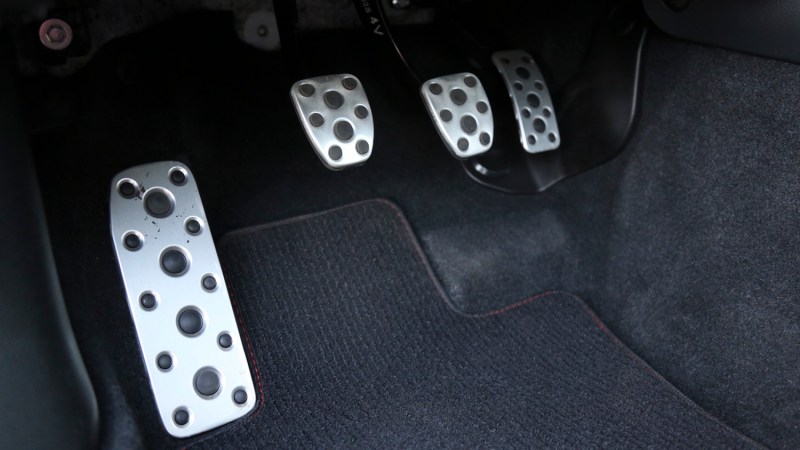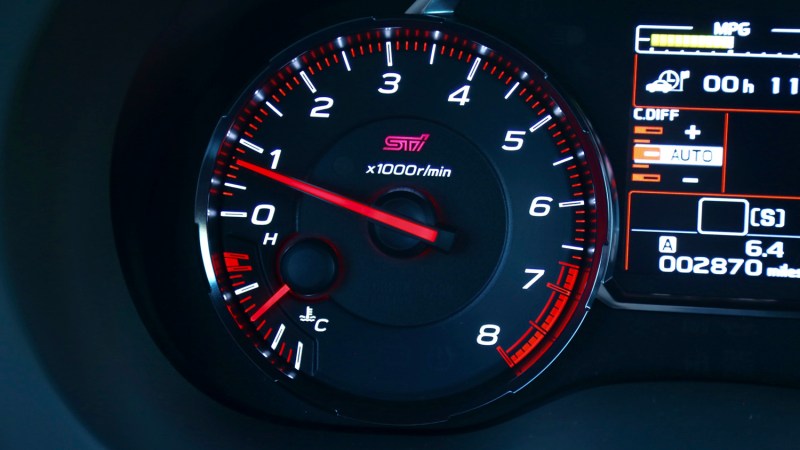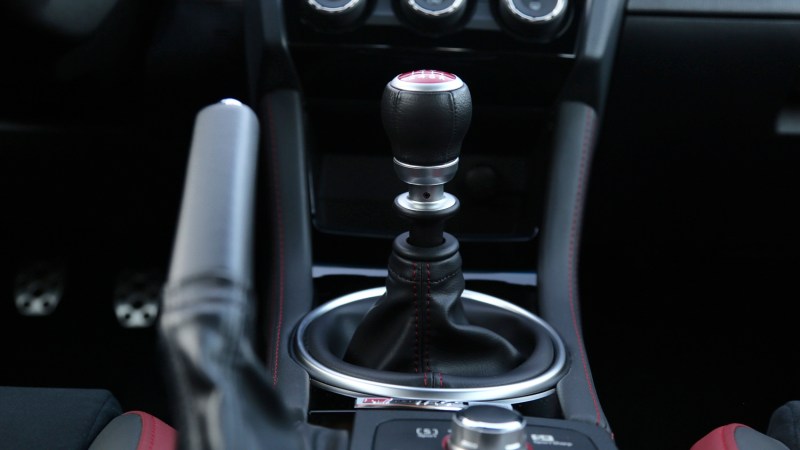
Some delinquents would have you believe that knowing how to driving a stick shift (manual transmission) is a useless skill. True, 95 percent of vehicles sold today in America are equipped with either an automatic or CVT (continuously variable transmission), but a number of used cars feature a standard, shift-it-yourself, gearbox.
There are several reasons why knowing how to operate one of these vehicles is of value. From most to least likely, consider that the ratio of manual to automatic cars in Europe, South America, or Asia is inverse to our own in America. If you plan to visit these continents and want to rent a car, you will absolutely need to know how to drive a manual.
Or consider whether you want to walk home after your friend (who drove to the bar in his or her stick-shift car) has had too much to drink. In an emergency situation, should you need to rush someone to the hospital and the only form of transportation has a manual transmission, you and your loved ones will be grateful for your deft shifting.
Beyond these examples of need, we can assure you that driving a manual transmission is a great deal more fun than simply scooting around in an automatic – yes, when you know how, you may seek out a manual-equipped car to daily drive. So, without further ado, here’s a step-by-step guide to driving a stick/manual transmission.
Get Comfortable with the Clutch and Gearshift

Before you ever turn the key in the ignition, it’s best to get acquainted with the clutch pedal – the extra pedal located to the left of the brake – and stick shift – usually found in the center console between the front seats or adjacent to the steering wheel. Your seating position is critical to operating these two features. Assure you can fully depress the clutch pedal without straining to reach with the ball of your foot, and hold the gear shift with a bit of bend in the elbow.
Next, review the gear shift pattern (commonly displayed on top of the gear knob). This diagram shows how each gear is achieved. Typically, the numbers corresponding to each gear increase from left to right, with an “R” (for reverse), extending beneath the highest gear, or on its own path to the right or left of the core pattern. On some models, reverse is only accessible by lifting up a gate beneath the shift knob while moving the lever, or pushing down on the knob (again while moving the lever).
Also on this shift pattern is a neutral gear, “N,” located in the mid-range between every notch. Neutral is something of a “safe zone,” where you can leave the car running without depressing the clutch. One can access neutral by pressing in the clutch pedal and moving the shifter to a position between two numbered gears.
Start Shifting

It’s not time to turn on the car just yet, but you are ready to do a bit of work. Keep this in mind at all times when driving a manual: shifting begins with the clutch but ends with the gas. In other words, pressing down the clutch allows the gear-shift to move freely, but to actually engage the gear (get the car moving), you’ll need to release the clutch pedal while easing onto the gas pedal. This “ships passing in the night” act is fundamental to the whole process – perfect this transition, and you’ll master manual shifting.
Here’s the procedure, spelled out once more:
- Step 1: Depress the clutch with your left foot.
- Step 2: Shift the gear lever with your right hand.
- Step 3: Slowly depress the gas pedal with your right foot while simultaneously releasing the clutch.
After shifting from neutral to first gear, you will shift from first to second (using the same procedure), then to third, and on up as speed builds. When braking, or otherwise reducing speed, you will “downshift” or move down each gear through the same method. Work your way through the gears (with careful practice of clutch and gas transition) as many times as you need to feel comfortable.
Use Your Imagination

We promise we’re not teasing you, but there’s one more step to do before firing up the engine and setting off: use your imagination. Pretend you’re driving to work, or running errands. In an automatic car, you probably enter a sort of auto-pilot mode (not fully checking out, but not thinking carefully about all your inputs). With a manual transmission, you can never truly let your mind wander; there’s always something to do.
Every time you will be accelerating, you will need to work your way to higher gears. A good rule of thumb is to shift before your tachometer registers 3,000 rpm, or otherwise feels like it is overworking. If your music isn’t playing too loud, you’ll be able to hear clearly when your engine is pushing too hard (and needs a higher gear).
Simulate your drive with the clutch, gas, and gear shift procedure you’ve practiced. When traffic slows, you’ll need to go down a gear or two. When the light turns red or you come to a complete stop, you’ll need to return to first gear (with the clutch depressed), or to neutral with your foot on the brake. When you’re first learning how to drive a manual, we recommend staying in first gear at all but long interval stops. You don’t want to be in a panic to shift back into first gear when the light turns green and stall the car (more on that in the next section).
Get Moving (Slowly)

The fateful hour has come. You have permission to turn on the car! We’d recommend finding a big parking lot or a low-trafficked, flat area to start out. You may want to find a family member or buddy to drive the car to this type of setting (and offer some tips or feedback).
To start the car, make sure you’re in first gear and have the clutch depressed. Turn the key in the ignition (or press the stop/start button), and keep your foot planted on the clutch. Using your well-practiced technique, begin releasing the clutch while slowly easing into the gas. Now that you’re in motion (around 15 mph should do the trick), shift into second gear. Keep the speeds low for now and practice coming to a stop, shifting back into first, and then repeating the acceleration/deceleration process. Do this until you’re very comfortable with first and second gear.
Stalling happens to everyone (even veteran drivers), so don’t be embarrassed.
During this process, you will no doubt stall – breathe deeply. Stalling (killing the engine) happens when you release the clutch pedal too abruptly or don’t feed in sufficient throttle, thereby not allowing the gear to properly engage. Stalling happens to everyone (even veteran drivers), so don’t be embarrassed. When this happens, simply depress the clutch, fire up the car, and get back into the swing of things.
When you’re an expert at first and second gear, feel free to build more speed and advance to higher gears. At this point, your parking lot might not be big enough, so you’ll need to move to a longer stretch of road (hopefully one that still doesn’t have much traffic).
Practice, practice, and then practice some more. Pretend someone darts in front of the car. You’ll need to press the clutch and brake simultaneously so you come to a stop without killing the engine. Eventually, you’ll need to merge onto a highway, which means accelerating quickly and working through the gears faster. Spend more than a day or two getting comfortable with driving on flat, un-trafficked roads before you get into a busy parking lot, city street, or hilly environment.
Starting on a Hill

This is probably the toughest part of driving a manual, and requires lots of finesse with a manual transmission. You’re going to be nervous, but knowing how to start on a steep incline is essential to driving a manual in all conditions.
Here’s how you do it.
Method 1: Using the E-Brake
When stopped on an incline (in first gear) with one foot on the brake and the other depressing the clutch pedal, find the e-brake – typically a lever just to the right of the driver’s thigh. If your e-brake is a button or trigger, we don’t recommend using this method. If you have the lever, engage the e-brake. When it’s time to get moving, perform the normal procedure of releasing the clutch and brake while getting on the gas. The e-brake will keep you from rolling backwards, but when you’re moving, you’ll need to release the e-brake with your hand.
Method 2: Smooth and Fast
There’s no trick to this second method, but that also makes the process more straightforward. Unlike method 1, you don’t need to remember to release the e-brake while you’re doing all the other steps. However, you don’t have an aid to keep you from rolling back. Method 2 is simply to release the clutch and brake and apply throttle in a smooth, fast way. Easier said than done, yes, but if you’ve been practicing this transition as much as we recommend, you are really just speeding up the same process.
Good Luck!
Rome wasn’t built in a day and learning how to drive a manual will take longer 24 hours to master. You will stall and you won’t be smooth at first – that’s okay. Take the time to practice before driving in challenging situations. Then, when you’re ready, be the manual-driving hero your friends and family can’t help but admire.


